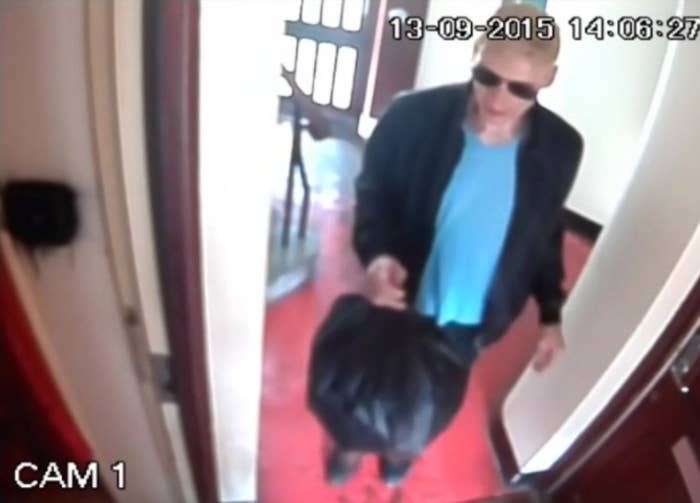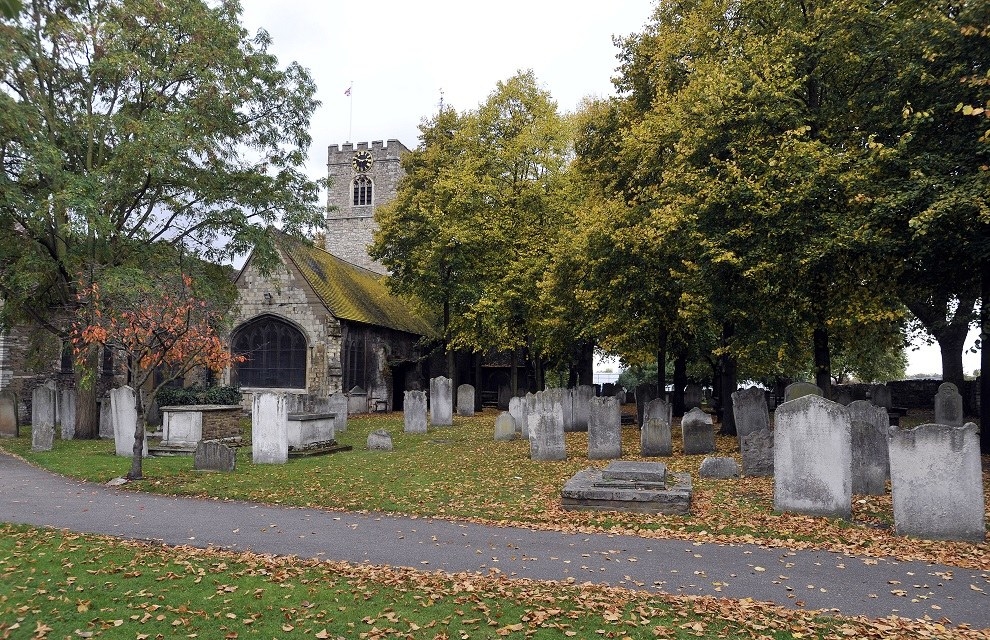
Scotland Yard has admitted that officers potentially missed opportunities to catch a serial killer who drugged, raped, and murdered four young men before dumping their bodies.
In a case that raises serious concerns about police officers’ ability to tackle crimes related to online dating and drug-related sexual abuse, Stephen Port was found guilty at the Old Bailey on Wednesday of murdering Anthony Walgate, Gabriel Kovari, Daniel Whitworth, and Jack Taylor. All but one of them were under the age of 25.
Police believe Port may have raped or abused other victims and are urging them to come forward. Working with London coroners, police are also reviewing 58 deaths related to the use of GHB over the course of four years to determine whether there was any wrongdoing.
The four murder victims' bodies were found in or near St Margaret’s graveyard in Barking, 400 metres from Port’s east London flat, within 15 months of each other.
Port was also found guilty of four counts of rape, 10 counts of administering substances with intent, and four counts of assault by penetration.
He was found not guilty on three counts of rape relating to two living complainants.
He will be sentenced on Friday and has been told to expect a full-life sentence.
The lengthy trial heard that Port, who worked as a chef in a bus garage and part-time escort, met his victims through a variety of dating and gay hookup apps and websites, before luring them to his flat and spiking their drinks with the date-rape drug GHB.
Port administered lethal doses to his four victims, before raping them while they were unconscious, sometimes filming the abuse.

Speaking at a press briefing before the verdict, Detective Chief Inspector Tim Duffield, the senior investigating officer, said: “I’ve got nearly 28 years’ police service, much of which has been spent investigating homicide and serious crime, and I think Stephen Port is probably one of the most dangerous individuals I’ve encountered.
“He’s a voracious sexual predator who appears to have been fixated – nay, obsessed – with surreptitiously drugging young and often vulnerable men for the exclusive purpose of rape.”
But senior Metropolitan police officers now admit that they failed to identify Port sooner. Despite the similarities in the victims' ages and the circumstances of their deaths, police initially failed to connect the first three cases or treat them as suspicious.
By chance, a dog walker found two of the bodies, Kovari, 22, and Whitworth, 21, in the same graveyard, weeks apart. They were placed in the same manner: propped up against a wall.
Port even served a prison sentence for perverting the course of justice, for lying to police about the death of Walgate, his 23-year-old first victim.
Port had called 999 in early hours of 19 June 2014, claiming he had just finished a nightshift and chanced upon the body. But it later became clear that Port had hired Walgate as an escort.
During a police interview after he was arrested on suspicion of perverting the course of justice, Port asked: "Can I just say for the scenario – if it was an accident, and if he did have a fit in my place, is that still my fault?"
Port later changed his story and admitted to having met Walgate and taken drugs with him and found his body rigid in bed, before panicking and putting the body outside. Port pleaded guilty to lying to the police in March 2015, and was given an eight-month sentence, before being released with an electronic tag in June 2015.
He went on to murder Taylor, 25, whose body was discovered on 14 September 2015, and it was only then that a murder investigation was launched. Port was not arrested over the murders until October 2015, after the deaths had been reviewed by the Met.

All four of Port’s victims fitted the bill of what his social media profiles said he was after: boyish young men referred to in LGBT culture as “twinks”. All four were also ordinary young men starting out in life. The police made clear at the media briefing that the victims were not to blame.
Walgate, from Hull, was a fashion design student; Kovari, originally from Slovakia, was an artist; Whitworth, from Gravesend in Kent, was an aspiring chef, and Jack Taylor, from Dagenham in east London, was a forklift truck driver.
Described in court as a habitual and compulsive liar, Port wrote a fake suicide note and left it on the body of Whitworth, which was written to make it seem like Whitworth was confessing to having killed Kovari, even though the two never met.

The Met referred itself to the Independent Police Complaints Commission (IPCC) after Port’s arrest in October 2015, and an investigation is under way into the handling of the case by at least 17 Met officers.
The police investigation was one of the most complex in recent years, with more than 100 digital devices trawled for information, more than 2,000 police exhibits examined and catalogued, and more than 10 million lines of data pored over.
But Commander Stuart Cundy, of the Met’s specialist crime and operations command, told reporters at the press briefing before the verdict: “When we launched the murder investigation in October 2015, at the same time we also voluntarily referred each of the deaths to the IPCC. The evidence that we have heard at the trial of Stephen Port does identify that there were potentially missed opportunities.
“We’re working closely with the IPCC and it’s important there is an open and independent investigation. And whatever learnings and findings come out of that the Met will consider and respond accordingly.”
The Met also admitted that its staff, including frontline officers and detectives, lacked the skills, knowledge, and expertise to properly investigate crimes related to chemsex and social media.

Cundy said: “We’re not waiting on the IPCC investigation to undertake any changes from our perspective – I think it’s safe to say that the understanding and awareness of all of our colleagues on the frontline, who day by day do a terrific job across London, their understanding of drug-facilitated sexual assault and chemsex was pretty patchy. Some might have known about it but not many.”
Cundy stopped short of apologising to the surviving victims and their families and instead said his “heart goes out to them” and said he didn’t want to preempt the IPCC’s findings.
Training has been carried out among Met officers and a new policy put in place to help them understand what drugs are commonly used within the LGBT community in a sexual context, and to understand what sort of deaths should be considered unexplained.
Port’s crimes have sent shockwaves through the LGBT community and led many to question the role of the police.
The LGBT Advisory Group, set up in the wake of the nail bomb at a pub in Old Compton Street, Soho, in 1999, said in a statement that it supported the referral of the case to the IPCC and welcomed the police’s admission that opportunities were missed but called on them to “demonstrate without delay a commitment to addressing any systemic or cultural issues that may have contributed to these sad events”.
The group said that among the questions the police needed to answer were whether better cultural understanding could have led to different decisions in the handling of the deaths.
Commander Mak Chishty, the Met’s lead officer on community engagement, stressed that the case was not evidence of an unwillingness to investigate crimes within and against the LGBT community.
“There have been some issues with the investigation, there is an ongoing IPCC inquiry and in respect of that I don’t want members of the LGBTQ community thinking that there there was something in [our] attitude that led to the failings,” he said at the Met media briefing.
“Every life matters, LGBTQ issues are a concern to us, and I would urge anyone with any issues to come forward and speak to us.”

Stephen Port was a sexual predator who preyed on young men and used drugs to stupefy them for his own ends.
But to his father, “He’s just an ordinary person like you or me.”
Speaking to BuzzFeed News at his home in Becontree, east London, Albert Port, 74, who bears a noticeable resemblance to his son, added that he “hadn’t seen him” since his arrest last year.
“I’ve been waiting to get permission to see him,” he said. “My daughter [Sharon] has been seeing him though.”
While admitting that the trial has been stressful, Port did not want to be drawn on whether his son was guilty. “We’ll just have to wait and see what the jury says,” he said on the doorstep, while eating a choc ice.
He revealed that his wife, Joan – Stephen’s mother – is in ill health, and is not well enough to speak to the media, but that there has been considerable interest from both newspapers and television to do so. A sign hangs above the door, “Beware of the dog: enter at your own risk.”
Their end-of-terrace house, on a long, suburban street in an unremarkable area on the outskirts of east London, is just a few miles away from their son’s, in Barking, where his crimes took place.
When BuzzFeed News went to Cooke Street, where Port lived in a one-bedroom flat in a relatively modern block on the edge of an estate, only one of his neighbours wished to talk about him.
The woman did not want BuzzFeed News to use her name but said she had been living there for 11 years, and that Port had been residing there throughout that time.
“He was not very talkative,” she said. “Quiet. Just in and out, in and out. I would talk to all my other neighbours when they were there but he would just hide. He would just say hi or goodbye.”

There were “lots of guys” coming in and out to see Port, she said. “Different times of day, during the night, whenever.” There were also boyfriends, some of whom lived with Port for a while. “He had two that I spoke to regularly.”
They seemed “nice” she said, and “in their twenties” but there were arguments involving them “yelling at each other”, she said, and shouting “a few times”, which she heard only if in the corridor.
She did not intervene. “People fight every day, but between two guys, you think, ‘What the hell? Stop that!’ Would you go and talk to two guys fighting?”
There was one incident that particularly stuck in her mind.
“When he first moved in he moved in with a guy called Michael,” she said. “They were together quite a while until they broke up and had a big fight outside the door. Stephen was banging Michael’s foot in the door. Trying to get him out.”
She tried to help.
“I invited Michael in and gave him ice for his foot and he was talking to me about their relationship,” she said. “They were having problems, but I was uncomfortable having that conversation. I’m a Christian. Everyone has the right to live their life. For me it was uncomfortable because I’ve never had to listen to a guy telling me about his boyfriend.”
She added: “Michael was upset, he was crying and I was trying to be his friend. After I listened to him, I empathised and told him maybe it’s best to move on and leave him alone. I saw him [Michael] once or twice after that and I haven’t seen him again.”
There was another occasion, with another man, that she remembers clearly. “I came out because there was an argument between him and some other guy and I just started laughing because I thought one of them was a girl,” she said, explaining that the man with Port was very feminine. “Until he turned round and I saw he had stubble.”
She remembers, too, the day a body – that of Anthony Walgate – was found by their block of flats.
“I heard the doorbell ring next door and I thought it was mine, so I got up and opened it and I saw police officers, lots of them, all outside and my immediate reaction was, ‘Whatever it is I didn’t do it and I don’t know nothing about it.’ But then when I came outside there was a body outside and I get to know the whole story.” She said she did not see the body but a friend of hers did.
“And then a year later, the second time was the same thing.” By then, she realised what it all amounted to, and the kind of person she might be living next door to. “My immediate reaction was...” Unable to finished her sentence, she inhaled and exhaled loudly to convey the shock. “My parents wanted me to come home. I was scared.”
The shock, she said, was such that now “there is not enough electricity” to shock her again. “Next door? Right next door?” she added with disbelief. “You don’t always know your neighbours 100%…"

